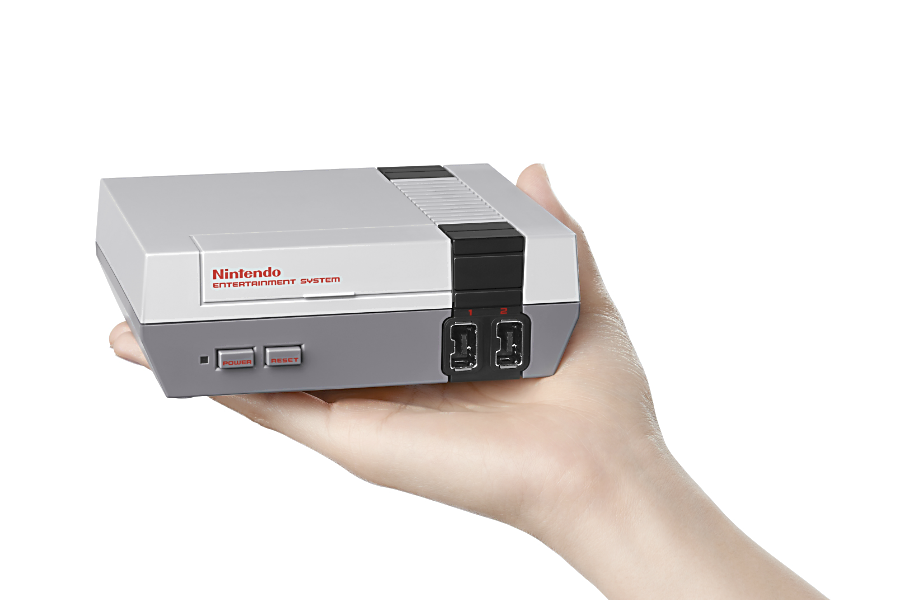Blast from the past: Nintendo to revive its original console
Loading...
If you're of a certain age, you likely remember when you and your friends came home from school to play your favorite Nintendo Entertainment System (NES) game for hours. Armed with a controller with just two large buttons and a Joypad, you battled King Koopa to save Princess Peach, climbed over ladders to face off with Donkey Kong, and insatiably devoured Pac-Dots.
Nintendo hasn’t forgotten either.
The Japanese corporation announced Thursday it will release a miniature, modern version of the original console it first debuted in Japan in 1983.
Along with the release of the Pokémon GO mobile game a week ago, Nintendo has joined the trend among video game developers of embracing their origins to tap into a surefire, niche market. In doing so, however, Nintendo will not only nourish the nostalgia of middle-aged customers, but also introduce the next generation to their favorite childhood games.
“We wanted to give fans of all ages the opportunity to revisit Nintendo’s original system and rediscover why they fell in love with Nintendo in the first place,” Reggie Fils-Aime, Nintendo of America’s president and chief operating officer, said in a statement Thursday.
Available Nov. 11, the NES Classic Edition will look and feel like the 8-bit console. Only it will be equipped with modern hardware. It will have an HDMI port for high-definition TV, and 30 games will be installed on it, including Super Mario Bros., Donkey Kong, and Pac-Man, as well as the Legend of Zelda, Metroid, and Kirby’s Adventure.
Players will also be able to use the gamepad to play games on the Wii, Nintendo’s newest console, the sales of which it expects to see petering out this year. It might not matter, since Nintendo’s modern twist to its original system could pay off for a corporation that has already seen its worth increase by $7 million in just one week, thanks to the spin-off of Pokémon.
Pokémon GO combines augmented reality with the video game series by using a smartphone’s camera and clock to guide a player through public spaces in search of imaginary monsters that “appear” on the screen. The game's popularity (7.5 million users in the US downloaded the game by Monday) is nurtured by Nintendo’s use of augmented reality for an audience of millions who grew up playing Pokémon on Game Boy or watching the TV series or films.
“Now these players have grown up. They’re in their 20s, 30s, and 40s. And, now, this game is for kids and them,” said Jose Pagliery of CNNMoney. “It’s a real broad appeal using mass technology that we've all got.”
Even with the success of Pokémon GO, and the announcement about the NES Classic Edition, Nintendo is late to join the trend of companies reintroducing games and systems years later for modern consumers. The Atari Flashback became available in 2003. Sega followed with its Arcade Classic, which included the game Sonic the Hedgehog. Yet Nintendo has already seen the most success.
Since the release of Pokémon GO in the United States, Australia, and New Zealand, the company's stock is up more than 25 percent. This is the largest leap in the company’s value since it started to trade on the Tokyo Stock Exchange in 1983, the year it released the Japanese version of NES, the Family Computer, or Famicom.
Though the NES Classic Edition will not have the appeal of augmented reality, or of the ease of downloading it onto your phone for free, the NES console was more popular in its time than Pokémon.
“Old Nintendo is arguably more popular than new Nintendo,” writes Wired magazine’s Chris Kohler. “And it’s not just adults who grew up playing the original who are driving up the cost…. [T]he potential market for the NES Classic is wide, wide open, across generations and genders.”
The revival of retro video games isn’t a new phenomenon, however, Michael Pachter, a gaming research analyst for Wedbush Securities, told Arizona PBS in October.
“It brings back simpler times,” Mr. Pachter said, referring to movies and comic books too. “There has always been a uniquely American nostalgia longing for the way things were in past years, and this is just another example of that.”
It just so happens that “the 10-year-old in 1985 and 1990 whose first game was Mario is now a 35, 40-year-old with a job and some money and maybe a kid or two,” he says.







